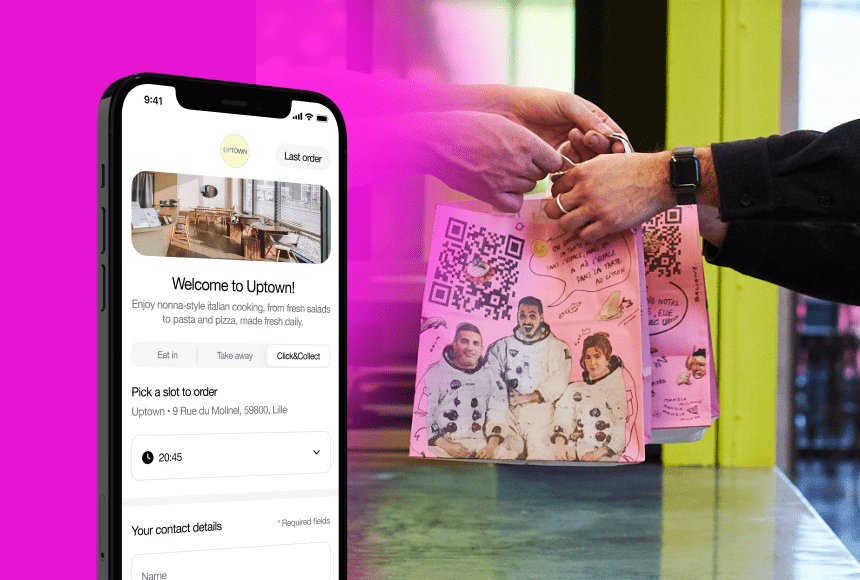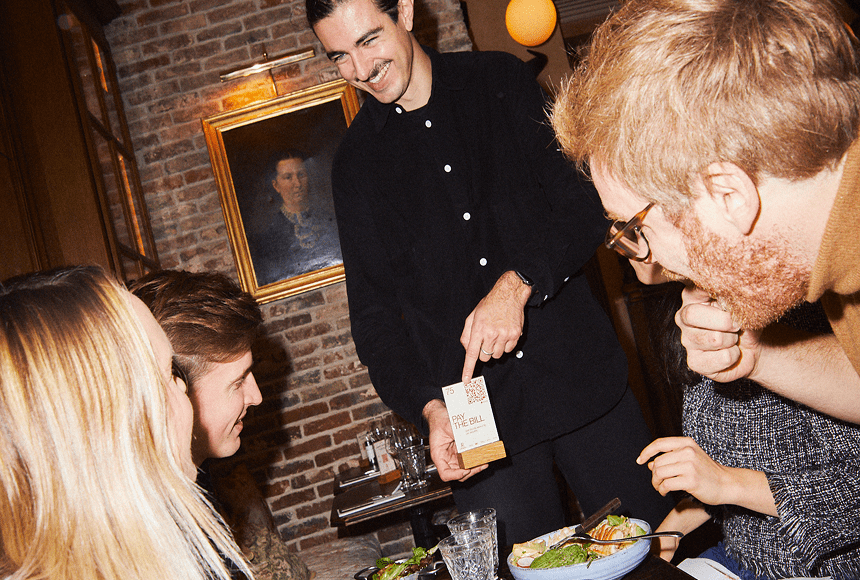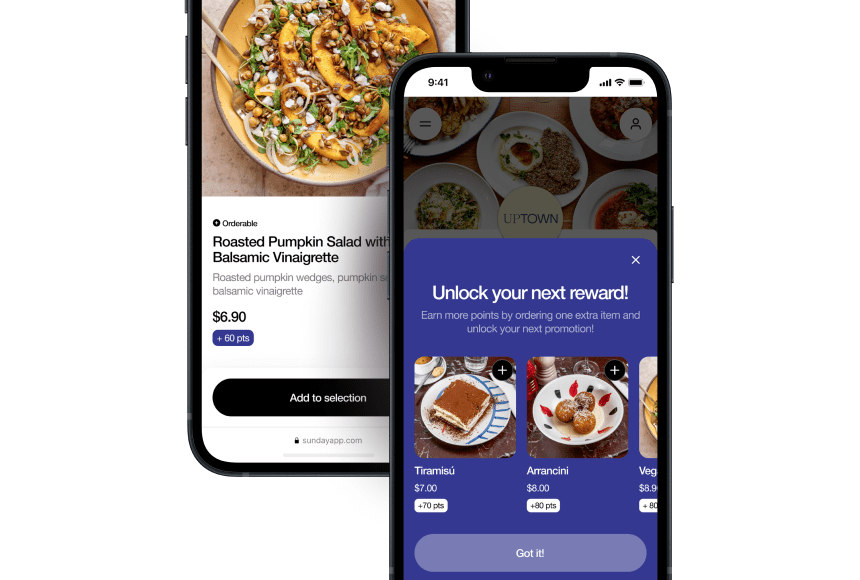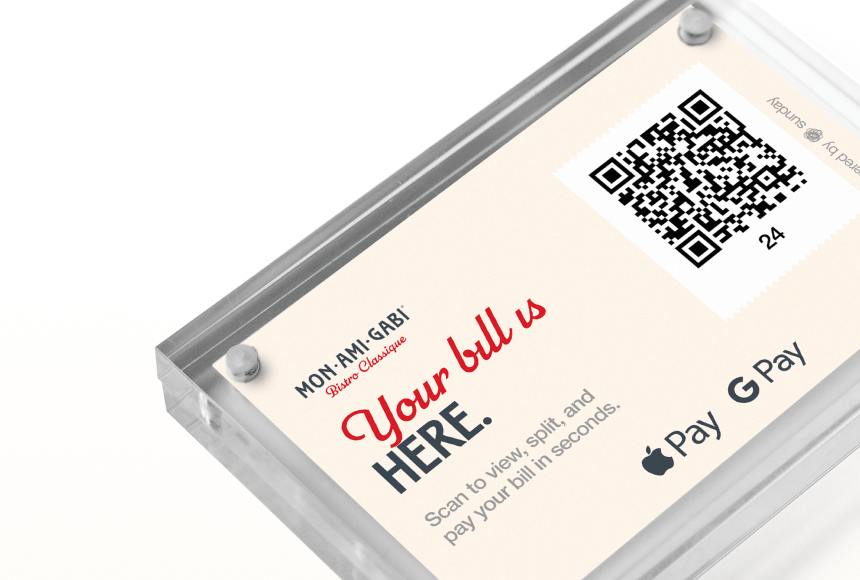
A Fresh Take on Streamlined Pickup for Your Restaurant
Understanding the Rise of Click & Collect
Over the last few years, ordering habits in the restaurant industry have shifted dramatically. Many guests now prefer to order online and swing by for pickup, rather than depending solely on dine-in or delivery. This approach—commonly called “Click & Collect”—has proven to be a powerful tool for restaurant owners eager to meet consumer demand and increase revenue. According to the National Restaurant Association, off-premises dining continues to grow in popularity, with takeout and pickup remaining a consistent part of customer habits.
For independent restaurants in particular, Click & Collect offers multiple benefits. It’s typically cheaper than delivery—no third-party fees—and it keeps your staff in control. From quicker transactions to higher average ticket sizes, the appeal is clear. But how can busy restaurant owners leverage this tool effectively? Let’s explore the key factors that will set you up for Click & Collect success, from setting up the right ordering system to ensuring a seamless pickup experience. We’ll also look at real-life examples and address common questions you might have about rolling out a Click & Collect program at your own business.
Why Click & Collect Matters for Independent Restaurants
Independent restaurants often have fewer resources than big chains. Budgets are smaller, staff is limited, and margins can be razor-thin. Yet the need to stay current with guest preferences is crucial. Many of your regulars—and new guests—expect to order on their own schedule, pick up on the go, and skip any hassle. That’s exactly what Click & Collect is all about.
Beyond simply meeting guest expectations, there are other tangible advantages that Click & Collect brings to the table:
- Lower overhead: Without the commission fees that come with delivery apps, your net profit per order goes up. You can redirect funds to marketing, staff training, or even new menu development.
- Faster table turnover: Guests picking up food free up dining space for on-premises customers, increasing your revenue potential day to day.
- Stronger brand control: You manage the ordering process without intermediaries, allowing you to preserve your restaurant’s unique branding and tone.
- Upselling opportunities: Smart online ordering systems let you suggest additional items, turning a “main course only” sale into a full meal with appetizers, drinks, and desserts.
In essence, Click & Collect can be your secret weapon—especially if you’re a neighborhood favorite looking to expand your business outside of regular dine-in hours.
Setting Clear Goals for Your Click & Collect Program
One of the first steps in implementing a successful Click & Collect strategy is defining your objectives. Do you want to improve overall sales, capture new audiences (like busy professionals seeking lunch on the go), or strengthen loyalty among existing guests? Some independent restaurants also use Click & Collect to augment catering services or special holiday menus. Whatever your aim, specific goals help you make informed decisions when selecting technology, setting up processes, and delegating tasks to your team.
Picture a small bistro in Chicago: “Chef Tony’s.” A few years back, Chef Tony noticed his weekday lunch crowd was thinning. Despite having a loyal weekend clientele, early weekdays felt like a missed opportunity. He decided to introduce Click & Collect with a focus on lunchtime. By offering a discounted soup-and-sandwich combo for pickup, Chef Tony’s quickly gained traction among office workers who sought convenient, high-quality lunches. Within six months, he saw weekday sales jump by 25%. This real-life scenario shows how a goal-based Click & Collect approach can deliver transformative results.
Choosing an Effective Online Ordering System
A well-designed online ordering system is the heart of Click & Collect. If guests encounter complexity or confusion while trying to place an order, they may abandon the process. So simplicity is crucial. Fortunately, many affordable, user-friendly options exist for independent restaurant owners today.
When you’re evaluating platforms, ask these questions:
- Is the system easy to navigate? Test it as a customer would on mobile and desktop. Any friction—like making an account before checkout—could deter potential orders.
- Does it integrate with your POS terminal? This helps minimize manual entry and reduces errors. Systems that sync seamlessly with your existing point-of-sale also limit staff frustration.
- Can you customize your menu and branding? You spent time creating your restaurant’s look and feel. It should be carried over into the platform’s interface to encourage brand recognition.
- Are order confirmations and notifications automated? Notification features keep guests informed of order status and pickup times, saving your staff from numerous “Is it ready yet?” calls.
Once you’ve chosen a platform, set it up with appealing photographs and accurate menu descriptions. Pricing should be crystal clear. Any additional fees—like packaging or a convenience charge—must be disclosed right away to avoid surprising guests at checkout.
Streamlining the Pickup Workflow
As soon as orders start rolling in, the efficiency of your kitchen and front-of-house team makes or breaks your Click & Collect program. The key is to designate a clear workflow that handles orders in real time. Below is a simple table illustrating how you might organize the process:
| Step | Action | Tools |
|---|---|---|
| 1. Order Receipt | Order appears on the online ordering dashboard or on your restaurant POS terminal. | POS software with kiosk-ready integration |
| 2. Kitchen Fulfillment | Ticket prints in the kitchen or is displayed digitally for the line cook to prepare. | Kitchen display system (KDS) or synced printer |
| 3. Packaging | Ensure the correct items (including extras) are placed in secure takeout containers. | Branded packaging, thermal bags, labeling system |
| 4. Pickup Notification | Guest receives a text or email that order is ready for pickup. | Automatic SMS/email feature |
| 5. Guest Arrival | Order is handed off in minimal time. Payment is confirmed if not prepaid. | POS terminal or a QR-based payment solution |
Each step should flow seamlessly to the next, ensuring your staff knows who is responsible for what at each stage. Simple color-coded labeling—green for completed orders, red for orders in progress—can help your team track pickups without confusion.
Simplifying the Payment Experience
A common bottleneck for Click & Collect is the payment process. You want to minimize the time guests wait in front of your counter, especially if it’s a busy lunch rush. Offering an online payment option is optimal because you can confirm payment in advance, letting customers arrive, grab, and go. No lines, no fuss.
Digital payment solutions like sunday can streamline your process even further. For instance, if your Click & Collect platform provides a QR code or a simple checkout link in the confirmation message, guests can stay in control of how they pay. They can also leave tips if they appreciate the service. When the payment is taken care of online, you’re in a great position to keep staff focused on quality control, plating, and the in-house guest experience.
Designing Your Pickup Area for Success
One of the biggest mistakes restaurants make with Click & Collect is failing to designate a proper pickup area. The last thing you want is a crowd of people stuck near the entrance, blocking the hostess stand or the path to restrooms.
Instead, plan your space carefully:
- Use clear signage guiding guests to a separate pickup spot. This can be as simple as an “Order Pickup” poster pointing to a table or counter near the entrance.
- Ensure your staff can easily see who is waiting. A quick “Hello, what’s the name on your order?” can reassure guests they won’t be ignored.
- Consider additional lighting or signage to highlight where people should stand—just like your cozy dining area has ambiance, your pickup zone should feel friendly and organized.
This thoughtful approach to pickup logistics eliminates chaos and leaves guests with a encouraging final impression. It also frees your service staff from the scramble of figuring out who belongs where.
Menu Optimization for Click & Collect
Not all items travel well, and a sloppy dish—for instance, a delicate soup that might spill—could lead to negative customer feedback. Before going live with Click & Collect, review your core menu to determine which items are best suited for pickup. Think of temperature, packaging, and the time a meal might spend in transit before your customer opens the container to start eating.
For items that might lose quality quickly, consider these tweaks:
- Packaging upgrades: Invest in sturdy, vented containers that prevent steam buildup.
- Deconstructed dishes: Serve sauces or dressings on the side to keep textures crisp.
- “Pickup-only” items: Offer certain dishes exclusively for Click & Collect to stand out, as long as they maintain taste and presentation after transport.
By tailoring your offerings, you enhance the overall experience. Whether it’s a signature salad or a wood-fired pizza, ensuring that it looks and tastes just as good at home as it would in your dining room is key to consistent repeat orders.
Leveraging Marketing Tactics to Boost Awareness
Even your most loyal regulars might not know you’ve started offering Click & Collect—especially if they’ve only ever visited your dining room. That’s where marketing comes in. Build excitement and get the word out via:
- Social media: Post mouthwatering photos of your best dishes available for pickup. Emphasize convenience and how simple it is to order.
- Email newsletters: Highlight special deals or mention “order now for pickup” in your next newsletter. Reward existing subscribers with a small discount on their first Click & Collect order.
- In-house signage: Place discreet but clear signage near your entrance or on each table to let dining guests know they can always skip the wait next time.
Chef Tony’s bistro, for instance, posted daily “Grab & Go Lunch” images on Instagram, accompanied by a clickable link to the ordering platform. He also offered his mailing list a “Buy One, Get One Half Off” coupon for new pickup orders. With each new tactic, he saw a jump in orders placed through the new system—proving that marketing can be the difference between an empty pickup counter and a well-oiled Click & Collect machine.
Promoting Tips and Reviews
While Click & Collect is a quick process, it doesn’t mean you have to lose out on tips. Many digital platforms (including solutions from sunday) incorporate an easy tipping option at checkout. Encouraging tips with a gentle prompt can help you maintain fair compensation for your team.
Additionally, don’t overlook the power of guest reviews. Because Click & Collect means less in-person contact, you might lose the chance to ask, “How was your meal?” face to face. However, you can still maintain that personal connection online. Embed a link to Google reviews in your order confirmation email or texting workflow. A quick line like “Enjoyed your meal? Share your thoughts here!” can boost your online presence and instill confidence in potential new guests perusing your reviews.
Maintaining Quality Control
Quality control is a natural concern for any restaurant adopting Click & Collect. There’s a higher risk of mistakes when you’re juggling multiple order streams—that’s why a clear procedure and well-trained staff are so important. Ask yourself:
- Do we double-check that each to-go bag has the correct items?
- Is there a hot and cold side in the kitchen to keep items at their ideal serving temperature?
- Are we accounting for prep times so that when a guest arrives, the meal is fresh and ready?
To keep mistakes to a minimum, dedicate a single point person to manage pickup orders during busy stretches. They’ll be responsible for labeling bags, verifying items, and passing everything to your front-of-house staff. Also, consider a quick “order accuracy” checklist. It works similar to your opening and closing checklists in the kitchen: clear, straightforward, and easy for staff to follow even on hectic days.
Staying Agile and Listening to Feedback
Perhaps the biggest advantage of being an independent restaurant is the ability to adapt quickly to guest preferences and feedback. You don’t have to wait for a corporate chain directive to make changes—if something doesn’t work, you can pivot immediately. That flexibility is a competitive edge, especially for a Click & Collect program.
Check in with your guests regularly. Send them a friendly follow-up email or text after they place a Click & Collect order, and invite them to let you know where things went right—or where you can improve. If you notice patterns, like repeated complaints about packaging or wait times, take them seriously and adjust your approach. Even small tweaks like adjusting pickup times could have a big impact on guest satisfaction.
Considering Seasonal and Special Event Opportunities
One reason Click & Collect can be such a boon for independent restaurants is the ability to quickly create seasonal offers or special event packages. With minimal overhead, you can introduce a Valentine’s Day dinner-to-go or a Super Bowl snack bundle. Customers appreciate the convenience of picking up curated meals for a family gathering or celebration, and you benefit from concentrated, predictable revenue.
Say you run a neighborhood café that does a thriving breakfast business but goes quiet after 2 p.m. Whenever big local sporting events roll around, consider adding theme-appropriate combos priced competitively for local fans. Keep the menu concise: maybe some gourmet sandwiches, house-made chips, and a dessert tray. A short, targeted marketing push on social media may draw a brand-new audience into your café’s fold—even if they’ve never set foot inside for breakfast. Once you hook them with a special event meal, you can re-market to them for everyday meals, too.
Ensuring Data and Inventory Accuracy
Another overlooked detail in rolling out Click & Collect is data integrity. Whether you’re a neighborhood pub or a fine-dining bistro, running out of a popular menu item—only for the guest to discover during pickup—creates disappointment and might lead them to reconsider ordering in the future.
Real-time POS integration can help uplevel your Click & Collect program. When you sync your inventory with your online ordering system in real time, your platform can automatically mark items as “out of stock,” preventing oversells and guest frustration. Modern solutions also provide analytics on which items sell best through pickup, your busiest ordering hours, and how well you’re meeting ticket times. The more you track, the more data-driven your approach can become, ensuring that you optimize your offerings over time.
The Role of Staff Training
Behind every top-notch Click & Collect program are dedicated, well-trained staff members. They’re the ones preparing meals, packaging orders, and greeting guests with a smile. Make sure your team understands why you introduced Click & Collect, how it benefits them, and what their roles and responsibilities are.
Key training topics could include:
- Packing orders correctly: Emphasize the importance of packaging items so they stay intact and look appealing when opened at home.
- Using communication tools: Show staff how to monitor the online ordering system or kitchen display screens for incoming requests.
- Customer interaction: Even though Click & Collect is quick, a friendly greeting and a parting “Thank you!” can significantly boost a guest’s impression.
Periodic refreshers or short monthly meetings can reinforce best practices and shine a light on any new issues, like updated packaging methods or changes in your online ordering platform.
Organic Mention: How sunday Can Boost Your Pickup Process
Beyond a smooth online ordering and pickup flow, consider how your payment system affects the guest experience. If the line for paying is too long, or if staff is fumbling with card terminals, your guests might leave with a sour last impression. By incorporating a technology like sunday—a hassle-free payment solution that allows guests to pay in a snap using a QR code—you remove payment friction. They can even tip and leave a quick Google review if prompted, all with minimal steps. The end result? Higher satisfaction rates and shorter wait times—a win for both you and your customers.
Evaluating Your Ongoing Performance Metrics
Nothing should be set in stone. Once you’ve launched a Click & Collect program, monitor how it’s performing so you can fine-tune as needed. Some metrics to watch include:
- Average ticket size: Has your average order value gone up due to upsells and combo meals?
- Pickup volume trends: Which days of the week or times see the highest pickup orders, and how can you prepare accordingly?
- Coupon usage: Are promotional codes driving repeat business, or are they attracting only one-off bargain seekers?
- Customer feedback ratings: Keep a close watch on review sites and direct feedback to gauge where your program excels or falls short.
The beauty of digital platforms is the wealth of data you can gather. By interpreting these metrics alongside staff insights, you’ll keep refining your Click & Collect game until it’s a core contributor to your bottom line.
The Future of Convenient Dining
As more people balance busy routines with the desire for high-quality meals, Click & Collect shows every sign of becoming a permanent fixture in the restaurant scene. For independent restaurants, this opens up a path to growth that doesn’t require seating more diners or opening additional locations. Instead, you capitalize on new consumer behaviors and technology to widen your reach and improve profit margins.
By offering a clear, user-friendly process—from placing an order online to picking it up in a welcoming environment—you’ll stand out as a restaurant that truly “gets it.” And by pairing that convenience with your signature recipes and culinary flair, you’ll keep customers coming back for both dine-in and pickup occasions, no matter what their schedule looks like.
Frequently Asked Questions (FAQ)
How do I promote my Click & Collect service without spending a fortune on advertising?
Social media and email newsletters are great low-cost methods. Mention special upsells or unique menu items, and encourage customers to order for pickup by highlighting convenience, speed, and the elimination of wait times. Adding a small discount or loyalty incentive can also entice customers to try your new service.
Which items should I offer for Click & Collect?
Focus on dishes that maintain quality even if they’re in a takeout container for 15 to 30 minutes. Avoid items that quickly lose texture or flavor once packaged. For example, if you have a specialized sauce that might turn your pasta dish soggy, consider packaging it on the side.
Can Click & Collect work for very small restaurants with limited staff?
Yes. Small kitchens can run fewer, carefully curated menu items to keep things manageable. Having an integrated POS terminal and a well-structured workflow can help ensure smooth operations. Proper staff training is especially important to handle orders efficiently.
Do I need a separate pickup section for Click & Collect?
It’s highly recommended. Even if it’s just a designated counter space or table, clearly label it and make sure it’s accessible near the entrance. This keeps in-house dining guests separate from those arriving only for a quick pickup, reducing congestion and confusion.
How do I encourage guests to leave tips and reviews for a pickup order?
Use an online ordering system or payment solution (such as sunday) that offers a tipping prompt. Follow up with a simple text or email inviting them to share a quick Google review. Make the process easy—no extra steps required—and guests will often leave kind words and a gratuity.
Find out more today
Drop us your details below and we’ll reach out within the next 24h
The click and collect solution integrated with your POS.
Let your customers order directly from you, where they are.




